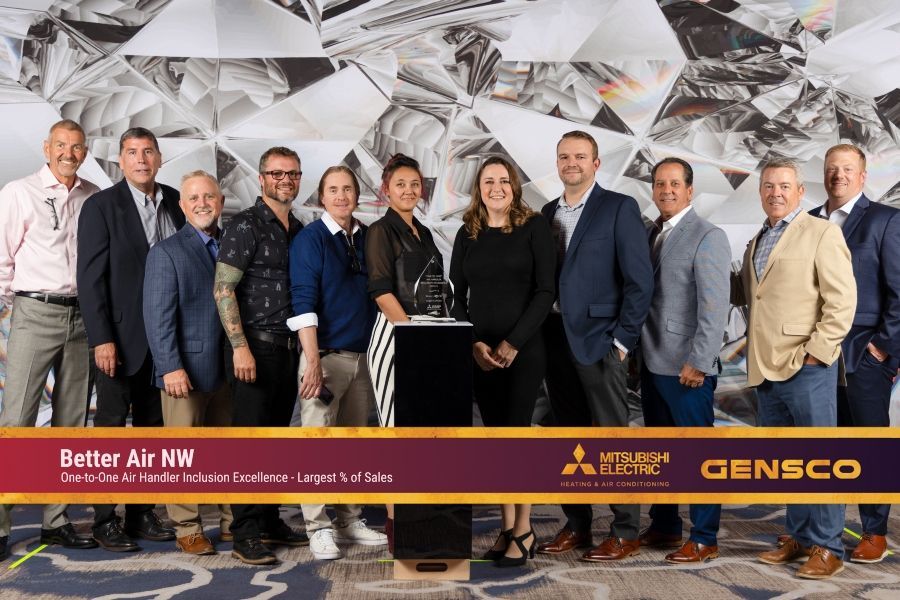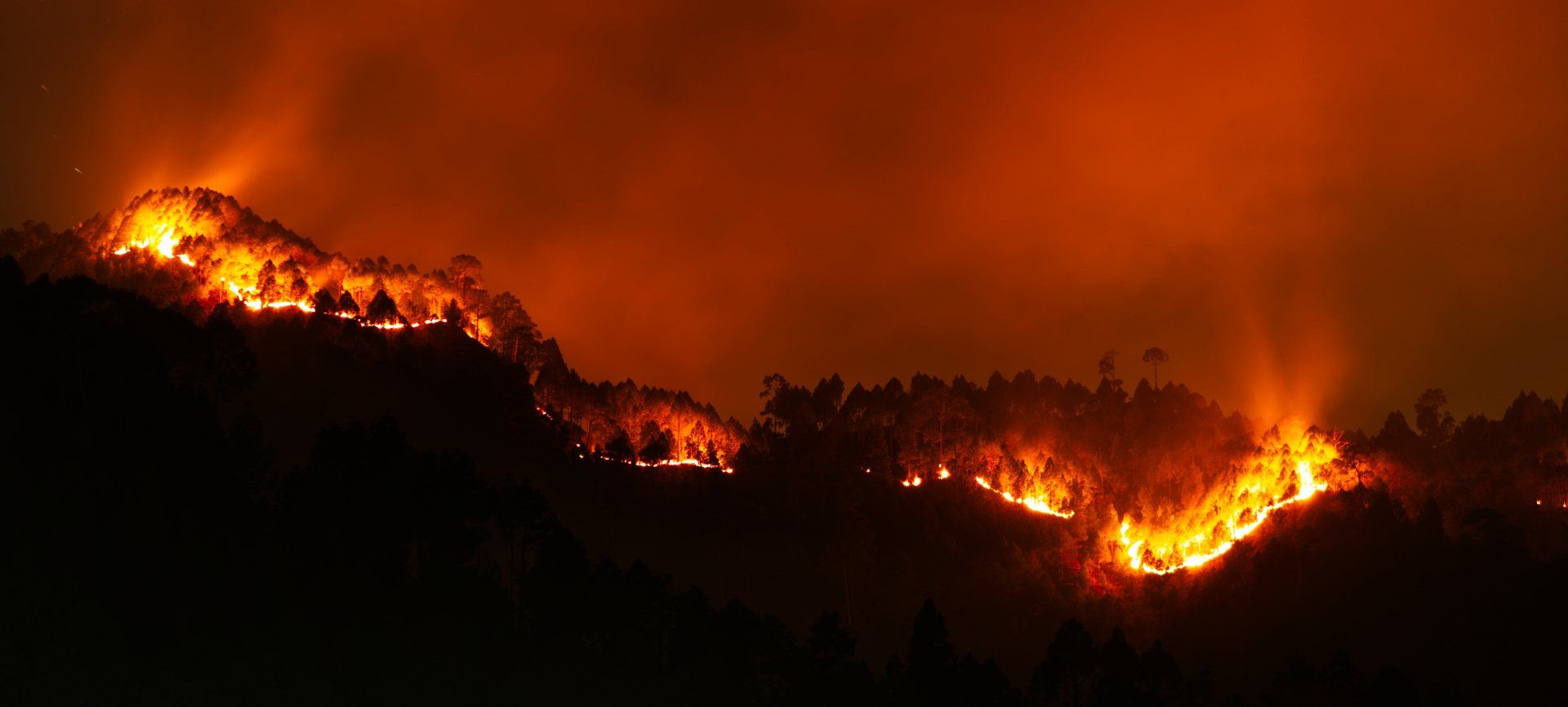Located in Everett, WA and serving both North King & Snohomish Counties.
Contact Our Experts Today!
Should You Replace Your Old Furnace?
Better Air NW • Nov 11, 2022
How to Know When It’s Time to Replace Your Old Furnace?
Annual maintenance can extend the life of your furnace, but there will still come a day when you have to replace it. We know it’s not an easy decision to make, but replacing your old furnace could actually save you money!
Most furnaces have a “lifespan” of 10-20 years, but you shouldn’t wait that long to replace your furnace. Older furnaces are more likely to break down just when you need them, and they aren’t doing you any favors when it comes to your utility bill. We recommend replacing them every 10 to 15 years – here’s why.
Reasons to Replace Your Old Furnace
It’s Inefficient
Modern furnaces are significantly more energy efficient than furnaces even just 10 years ago. Where old furnaces might hit 70 to 80% efficiency, newer furnaces hit 85% on the low end, with some even reaching 98%!
When we talk about the efficiency of a furnace, we’re referring to how much energy it can process into heat for your home. So if a natural gas furnace is 70% efficient, it processes 70% of that gas and vents the other 30% out of your home.
The thing is, you get charged for all the energy you use, whether it gets converted or not! Take a look at your last heating bill; 30% of that cost would not get used to heat your home.
Another thing to keep in mind is that furnace efficiency actually degrades with age. If that old furnace was 70% efficient out of the box 15 years ago, it’s not hitting those numbers anymore. Coupled with rising energy prices, it may be costing you more than you think.
It Needs Frequent Repairs
Wear & tear on your HVAC system is inevitable. Despite your best efforts, it will eventually struggle to do its job well. It won’t put out as much heat, distribute heat unevenly throughout your home, or even randomly shut off.
That gets frustrating quickly. How are you supposed to enjoy the comfort of your home if it can’t stay warm? Not to mention the time and money you’ll spend on frequent service calls to diagnose and repair your furnace.
Old furnaces can also expose you and your family to safety risks as parts break or corrode. They become fire hazards, harm your indoor air quality, and can potentially be a source of gas leaks or carbon monoxide poisoning. Newer furnaces utilize more safety features to prevent these kinds of risks!
It Costs More Than It’s Worth
When it comes down to the brass tacks, old furnaces actually cost more money over the long run. They’ll run up your utility bills, and frequent repairs take a sizable bite out of your wallet. Consider how much you’ve spent on yours in the past few years.
While the cost of buying a new furnace and having it installed can be daunting, it pays for itself with energy savings over 3 to 5 years. Once you’ve recouped that cost, you’ll have an efficient furnace that reliably heats your home for another 5 to 10 years!
If spending a few thousand on a furnace replacement still makes you feel queasy, you’ll be happy to hear you can reduce the upfront cost. For one, we offer financing through our trusted credit partners so that you can pay for it in installments. In addition, there are energy rebates you can take advantage of at the state and federal levels.
The US Department of Housing and Urban Development wrote a list of helpful resources for energy rebates in Washington, and Energy star can show you relevant energy rebates in your region. Make sure you’re applying for every rebate you’re eligible for!
Signs to Look Out For
While replacing your furnace every 10 to 15 years is a good rule of thumb, there are some telltale signs to look for.
Soot Buildup
– Soot building up on air duct covers or your furnace grille may be a sign it’s producing too much carbon dioxide.
Burner flames are yellow
– Blue flames are clean, but yellow flames may indicate carbon monoxide being released.
Excess rust, cracks, or erosions
– These all have the potential to become dangerous leaks.
Those signs are obvious, but there are other signals that may indicate it’s time to replace your old furnace.
Frequent Repairs
– You find yourself scheduling annual repairs (not maintenance).
Unusual Noises
– Pops and pings are normal, but other noises may mean more serious issues.
Skyrocketing Heating Bills
– You’re heating your home a normal amount, but your energy bill is getting more expensive.
Ready to Replace Your Old Furnace?
Maintaining an old furnace is a nuisance that’ll cost you money, time, comfort, and health. Installing a new furnace is expensive, but it’ll make all the difference in your ability to enjoy your home and save money! If you’re ready to save yourself the headache, we’re ready to help.
In The News

By Better Air NW
•
28 Jul, 2023
When it comes to home additions and renovations, finding the right HVAC solution can be challenging. Traditional ducted systems may not always be feasible or cost-effective. That's where ductless mini-splits come in. In this comprehensive guide, we will explore the benefits, installation process, and maintenance tips for ductless mini-splits, helping you make an informed decision for your home improvement project.
By Better Air NW
•
12 Oct, 2022
Is your furnace not producing enough heat, or maybe it even stopped working altogether? With winter on the way, that’s the last thing you want to deal with. Luckily, we’ve seen it all during our decade-plus of serving the Seattle area. This is why we’ve put together a little guide to help you troubleshoot some common furnace problems! Furnace is Making Weird Noises Snap, crackle, pop! Some noises coming from your furnace are totally normal, but others signal an issue you should get checked out ASAP. Here’s a quick guide to some common noises you might encounter and what’s causing them. Popping and Pinging – Don’t worry about the occasional pop and ping. What you’re hearing is the metal in your ductwork reacting to the temperature. It expands when heating and contracts when cooling. Rattling – A rattling noise can set you on edge, but it’s usually an easy fix. Rattling is most commonly a sign that a panel in your ductwork is loose. Once you find the problem panel, it’s as easy as tightening some nuts & bolts. Shrieking – While this one might make you feel like an extra in a horror movie, the reality is a lot less spooky. What you’re most likely hearing is a loose or broken blower belt. Unless you’re mechanically inclined, this one’s best left for an HVAC technician. Grinding or Scraping – If you’re hearing this, stop your system immediately! That’s probably the sound of worn-out ball bearings trying to move your fan motor. Forcing your furnace to run like this can lead to even more costly repairs. This is one that should absolutely be left to an HVAC technician. Air Filter is Too Dirty Your HVAC filter’s job is to catch particulate matter like dust or dander so that it doesn’t circulate through your house. If you haven’t changed your air filter in a long time, it gets so gunked up that even the air coming from your furnace fan can barely pass through. It’s like running into a brick wall. If you leave it for too long, it even has the potential to damage your HVAC system. It can damage the limit switch that controls your fan or even cause your system to overheat and shut itself down. Neither situation is something you want from this all-too-common furnace problem. Luckily, it’s an easy fix – just replace them! We recommend doing it every three months or so and even more frequently if you have pets or some other condition that may clog them faster. Thermostat is on the Fritz Checking out your thermostat is a great place to start when trying to troubleshoot common furnace problems. First things first – check that it’s on! It sounds silly, but there are a lot of ways it could get turned off without you knowing. It’s actually quite a common furnace problem. Not only that, but It could be that someone turned it off accidentally when messing with the settings or simply that the batteries died. If you’re content that the thermostat is on and working properly, dive into the settings. Here are some things to look for: Make sure the thermostat is set to “Heat.” Make sure the “Fan” setting is turned off. This blows air without heating it. Adjust the temperature setting on the thermostat if it’s too low. Pilot Light isn’t Working Right A pilot light is a small flame that ignites the gas in your furnace to turn it on and provide heat. We recommend you leave any repairs for your pilot light to professional HVAC Technicians due to the dangers of working with gas and flames. Older styles of pilot lights are always on. If the flame just isn’t catching, there are a few culprits we commonly look for with this common furnace problem. Sometimes it’s as simple as a draft that interferes during ignition, but other times it’s something mechanical. This could be a faulty thermocouple, a clogged pilot orifice, or even a defective safety switch. Mechanical issues can’t be caught without opening up your furnace, so you’ll need an HVAC technician to take a look. Newer styles of pilot lights have an electric igniter that turns on at the beginning of every cycle. They rely on a flame sensor, a critical safety feature that shuts the whole furnace down if it detects gas but no flames. If this sensor gets dirty, it won’t be able to see flames regardless and will shut everything down unnecessarily. Important Safety Information If you notice any changes to your pilot light, like flickering or yellowish color, get your local furnace technician to come out as soon as possible. These could potentially be signs of excessive carbon monoxide in your furnace. If you’re going to attempt to relight your pilot yourself, make sure to turn off your gas supply and wait at least a few minutes. If your pilot light has been out for some time, you could potentially have a dangerous build-up of gas around your unit. Always follow the instructions in your owner’s manual and understand the risks before attempting this work on your own. What You Can Do Yourself We love to help, and we’re always looking forward to your call, but there are some things you can do yourself to diagnose your HVAC issues that we consider common furnace problems. Here are some simple checks you can do to save yourself a service call: Make sure your furnace is plugged in. It doesn’t hurt to check! Take a look at your thermostat to ensure it’s on and set to the correct temperature and mode. Change your HVAC filters at least quarterly, if not more. Do a tour of your registers to make sure all are open and circulating air. Make sure your access panel is closed! Modern furnaces often have a safety feature that prevents your heater from running if it’s open. Check that the circuit breaker wasn’t tripped. If your furnace is causing it to trip, you’ll still want to call an HVAC technician. Need Your Furnace Repaired? If you’re running into these common furnace problems or any other, don’t be afraid to get on our schedule! As we’re approaching colder temperatures, the last thing you want is a malfunctioning heater. We’d be happy to help you diagnose and repair any issues with your heating system so you and your family can stay warm and comfortable through the winter.







